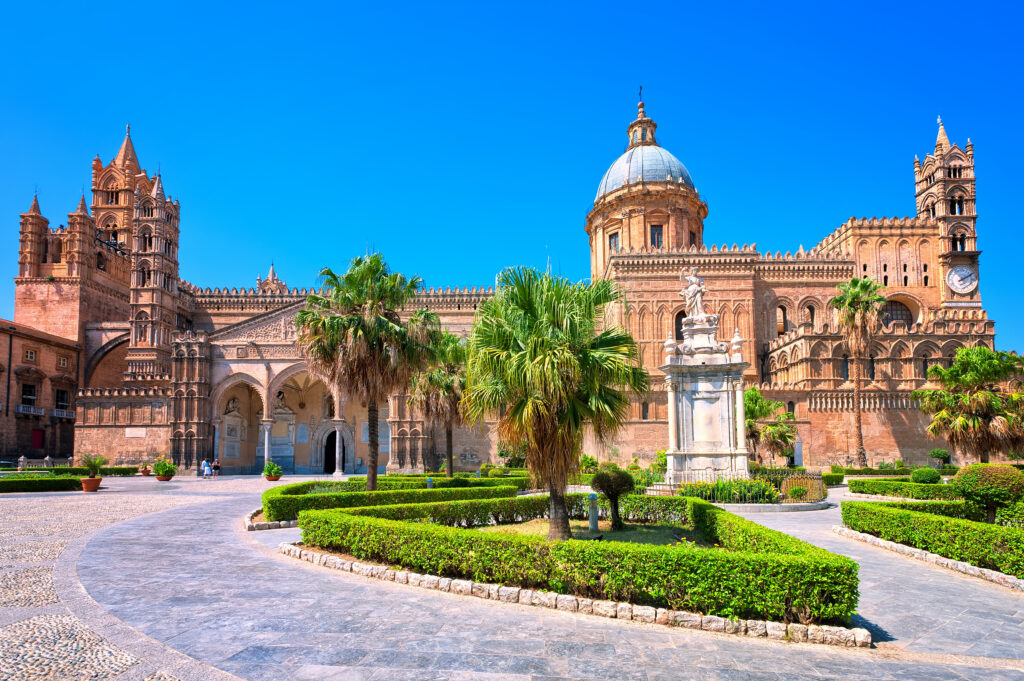Palermo, the capital of Sicily, is a city steeped in history, where a myriad of cultures have left their mark over the centuries. Founded by the Phoenicians around 734 BC, Palermo’s strategic location in the Mediterranean made it a prime target for conquest and trade. The city’s name, derived from the Greek word “Panormos,” meaning “all-port,” reflects its long-standing importance as a bustling harbor. Throughout its history, Palermo has been shaped by a succession of rulers, each contributing to its unique blend of architecture, art, and culture.

The city’s golden age began with the Arab conquest in the 9th century. Under Arab rule, Palermo flourished as a center of trade, science, and culture. The city became one of the most prosperous in the Mediterranean, renowned for its vibrant markets, impressive architecture, and lush gardens. The Arab influence is still visible today in Palermo’s intricate mosaics, ornate palaces, and the layout of its historic quarters. The fusion of Islamic and Norman architectural styles can be seen in landmarks like the Palatine Chapel and the Zisa Palace, where Arab craftsmanship and Norman strength merge seamlessly.
In the 11th century, the Normans conquered Palermo, ushering in a new era of prosperity and cultural synthesis. The Normans, recognizing the value of the city’s rich cultural heritage, preserved many of the Arab innovations while introducing their own architectural styles. Palermo became the capital of the Kingdom of Sicily under Norman rule, and the city’s most iconic monuments, including the Palermo Cathedral and the Church of San Cataldo, reflect this period of grandeur. The Cathedral, with its blend of Gothic, Norman, and Moorish elements, stands as a symbol of Palermo’s multicultural past.
The subsequent centuries saw Palermo under the rule of various European powers, including the Holy Roman Empire, the Spanish Crown, and the Bourbons. Each period left its imprint on the city’s architecture, cuisine, and traditions. During the Spanish rule in the 16th and 17th centuries, Palermo experienced a cultural renaissance, with the construction of grand baroque churches and palaces that still dominate the cityscape. The Teatro Massimo, one of Europe’s largest opera houses, is a testament to Palermo’s enduring cultural vitality during the Bourbon period in the 19th century.
To fully immerse yourself in Palermo’s rich history and diverse culture, the City Sightseeing Palermo service offers a convenient and comprehensive way to explore the city. This hop-on, hop-off tour allows you to visit key historical sites such as the Palermo Cathedral, the Norman Palace, and the Quattro Canti at your own pace. With informative audio commentary and multiple stops throughout the city, City Sightseeing Palermo provides an engaging overview of the city’s complex past while showcasing its vibrant present.
In conclusion, Palermo is a city where history comes alive through its stunning architecture, rich cultural traditions, and diverse influences. From its Phoenician roots to its Norman splendor and Spanish baroque, Palermo offers a captivating journey through time. With the City Sightseeing Palermo service, exploring this historic city becomes an enriching experience, allowing you to appreciate the layers of history that make Palermo one of Italy’s most fascinating destinations. Whether you’re a history enthusiast, an art lover, or simply a curious traveler, Palermo promises an unforgettable exploration of Sicily’s captivating past.

